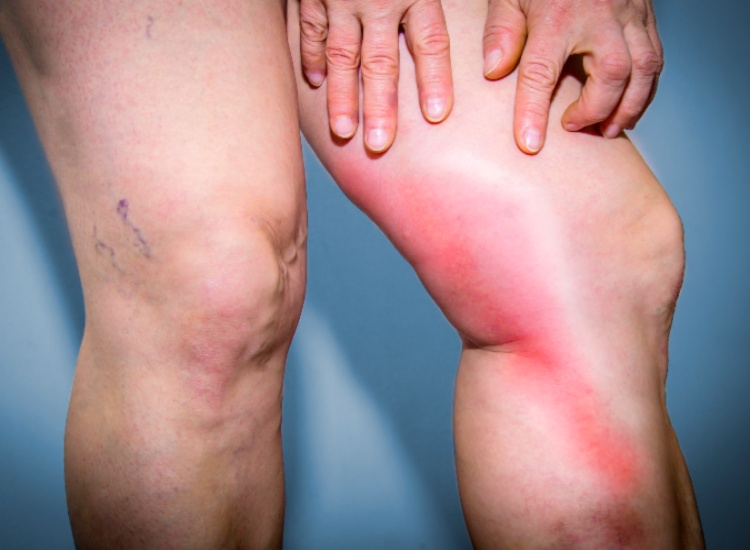Hard Lump in Your Varicose Vein? Phlebitis Could Be the Cause
Varicose veins are a common health issue affecting millions of people. Having enlarged, twisted veins on your legs might make you feel self-conscious, not to mention cause discomfort and pain. If you have noticed a hard lump on one of your varicose veins, seek medical attention because this could be a sign of phlebitis, a potentially dangerous vascular condition. Here, you’ll learn about phlebitis in varicose veins, the symptoms to watch out for, and the treatments available at Premier Vein & Vascular Center in Houston, TX.
What Is Phlebitis?
Phlebitis is when a vein becomes inflamed. This condition can affect superficial veins near the skin’s surface or deep veins within your leg muscles. Superficial phlebitis is usually less severe, while deep vein thrombophlebitis (DVT) is a more serious condition involving blood clots. DVT can lead to life-threatening complications if not treated promptly.
Symptoms of phlebitis include:
- Pain
- Swelling
- Redness
- Warmth around the affected vein
In some cases, a hard, tender lump on a vein may appear, indicating the presence of a blood clot.

Phlebitis and Varicose Veins
Phlebitis can occur in varicose veins, as the weakened valves and poor blood flow in these veins create an environment conducive to blood clot formation. Several factors may contribute to the development of phlebitis in varicose veins, including:
- Prolonged inactivity
- Obesity
- Smoking
- History of blood clots or vein damage
Symptoms of phlebitis in varicose veins are similar to those of regular phlebitis, with the addition of a visible varicose vein lump. This hard lump under the skin on your leg may be tender to the touch and should not be ignored, as it could be a sign of a more severe underlying issue.
Treatment Options for Phlebitis in Varicose Veins
There are several treatment options for hard lumps in veins caused by phlebitis. Your healthcare provider will recommend the right ones for you based on the severity of your condition, your medical history, and any underlying health issues. Here’s what your treatment plan may entail:
- Lifestyle changes: Adopting healthier habits can significantly improve blood circulation and reduce the risk of phlebitis in varicose veins. Maintaining a healthy weight, exercising regularly, and avoiding long periods of sitting or standing can promote better vein health. Additionally, elevating your legs when sitting or lying down and wearing loose-fitting clothes helps minimize discomfort and swelling.
- Anti-inflammatory medications: Over-the-counter anti-inflammatory drugs, such as ibuprofen or naproxen, can reduce the inflammation and pain associated with phlebitis. Your healthcare provider will recommend the appropriate medication and dosage.
- Compression stockings: Wearing compression garments improves blood flow and reduces swelling. You can find stockings in various compression strengths and lengths, so consult your doctor to determine the most suitable option for you.
- Warm compresses: Applying a warm, wet cloth, heated gel pack, or heating pad to the affected area for 15 to 20 minutes alleviates pain and improves circulation. To prevent burns, ensure the compress is not too hot, and check the skin periodically for irritation.
- Endovenous laser treatment: EVLT is a minimally invasive procedure that uses laser energy to close off damaged veins, redirecting blood flow to healthy veins. This treatment is performed under local anesthesia and involves inserting a thin fiber into the vein using ultrasound guidance. The procedure is typically completed in under an hour, and patients may resume normal activities within a few days.
- Sclerotherapy: This procedure involves injecting a chemical solution into the affected vein, causing it to collapse and eventually fade away. Sclerotherapy is an outpatient procedure performed using local anesthesia, with minimal downtime required. Multiple sessions may be necessary to achieve optimal results.
- Microphlebectomy: In this surgical procedure, varicose veins are removed through small incisions in the skin. Microphlebectomy is often performed under local anesthesia and may be combined with other treatments, such as EVLT or sclerotherapy.
Why Choose Premier Vein & Vascular Center?
The vein specialists at Premier Vein & Vascular Center provide comprehensive care for patients suffering from varicose veins, phlebitis, and other vascular conditions. Our state-of-the-art facilities, advanced diagnostic tools, and personalized treatment plans ensure the best possible outcomes for our patients. We aim to help you achieve optimal vein health and improve your quality of life!
Contact Premier Vein & Vascular Center
Do you notice a hard lump on your vein? Early detection and treatment are crucial to avoid complications from phlebitis in your varicose veins. For more information, consult a vascular specialist at Premier Vein & Vascular Center in Houston. We provide high-quality care using the latest varicose vein hard lump treatments and techniques. Call us today at 832-772-4899 to schedule an appointment and take the first step toward better vein health and a more confident future.
